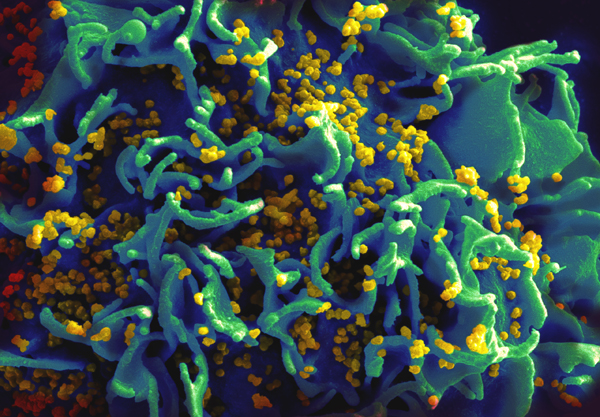The small molecule CLR01, which has been studied as a potential treatment for Alzheimer’s and other neurodegenerative diseases, may be effective in reducing HIV transmission. CLR01 is able to prevent amyloid proteins, such as those found in the brains of people with Alzheimer’s, from forming protein aggregates. CLR01 has also been found to effective in preventing fibril formation of the amyloids found in semen.
The amyloid fibrils present in semen have previously been shown to enhance transmission of HIV. The fibrils encase individual virions, which helps the virus attach to the cell membrane, increasing the probability of infection.
Researchers at the University of Pennsylvania and the University of Ulm have been studying the potential of CLR01 to inhibit seminal fibrils and prevent HIV infection. The scientists describe the action of CLR01 as a pair of “molecular tweezers”.
The results of a study conducted by the researchers found that CLR01 was not only effective in preventing fibril formation in the semen, but also disrupted the HIV virus itself. The research was published in the journal eLife on August 18.
“[CLR01] inhibits the formation of infectivity-enhancing seminal amyloids and remodels preformed fibrils,” wrote the authors. “Moreover, CLR01 abrogates semen-mediated enhancement of viral infection by preventing the formation of virion–amyloid complexes, and by directly disrupting the membrane integrity of HIV and other enveloped viruses.”
When human cells were exposed to semen that contained HIV, along with the inhibitor CLR01, the cells were at least 100 times less likely to succumb to HIV infection. Since the small molecule does not disrupt human cell membranes, it could be added to a lubricant to prevent transmission of HIV, without side effects.
The researchers tested CLR01 against other envelope-bound viruses such as human cytomegalovirus, hepatitis C virus, and herpes simplex virus, and found that the drug was effective at disrupting all of them. Due to its ineffectiveness against non-enveloped viruses such as human adenovirus type 5, it is thought that CLR01 attacks virus membranes.
“We establish that CLR01 acts by binding to the target lysine and arginine residues rather than by a nonspecific, colloidal mechanism. CLR01 counteracts both host factors that may be important for HIV transmission and the pathogen itself,” the authors continued.
Professor James Shorter from the University of Pennsylvania, School of Medicine commented, “We think that CLR01 could be more effective than other microbicides that are in development because of its dual action, its safety in terms of side effects and its potential broad application.”
According to Professor Jan Münch from the University of Ulm, “The tweezer has been tested and is safe in zebrafish and mice. The next step could be to assess safety and efficacy in non-human primates.”
The researchers don’t foresee any problems scaling-up production of CLR01, which is a necessity if the small molecule is eventually to be used as a microbicide.
Sources:
- Dual-Action Microbicide Attacks HIV and HIV-Friendly Fibrils in Semen – http://www.genengnews.com/gen-news-highlights/dual-action-microbicide-attacks-hiv-and-hiv-friendly-fibrils-in-semen/81251639/
- Lump, E., Castellano, L., Meier, C., Seeliger, J., Erwin, N., Sperlich, B., Stürzel, C., Usmani, S., Hammond, R., von Einem, J., et al. (2015). A molecular tweezer antagonizes seminal amyloids and HIV infection. eLife. 4 (e05397)












Join or login to leave a comment
JOIN LOGIN